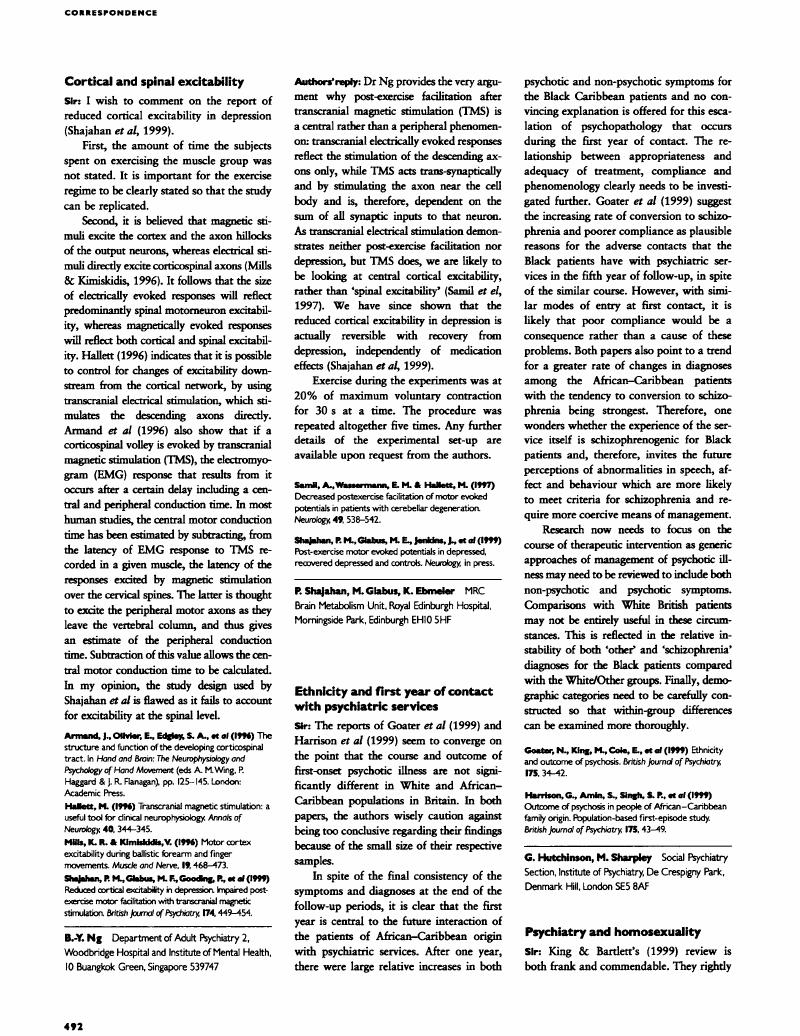No CrossRef data available.
Article contents
Cortical and spinal excitability
Published online by Cambridge University Press: 03 January 2018
Abstract
An abstract is not available for this content so a preview has been provided. As you have access to this content, a full PDF is available via the ‘Save PDF’ action button.

- Type
- Columns
- Information
- Copyright
- Copyright © 1999 The Royal College of Psychiatrists
References
Armand, J., Oliver, E., Edgley, S. A., et al (1996) The structure and function of the developing corticospinal tract. In Hand and Brain: The Neurophysiology and Psychology of Hand Movement (eds Wing, A. M., Haggard, P. & Flanagan, J. R.). pp. 125–145. London: Academic Press.CrossRefGoogle Scholar
Hallett, M. (1996) Transcranial magnetic stimulation: a useful tool for clinical neurophysiology. Annals of Neurology. 40, 344–345.CrossRefGoogle ScholarPubMed
Mills, K. R. & Kimiskidis, V. (1994) Motor cortex excitability during ballistic forearm and finger movements. Muscle and Nerve, 19, 468–473.3.0.CO;2-A>CrossRefGoogle Scholar
Shejahan, P. M., Glabus, M. F., Gooding, P., et al (1999) Reduced cortical excitability in depression. Impaired post-exercise motor facilitation with transcranial magnetic stimulation. British Journal of Psychiatry. 174, 449–454.CrossRefGoogle Scholar





eLetters
No eLetters have been published for this article.